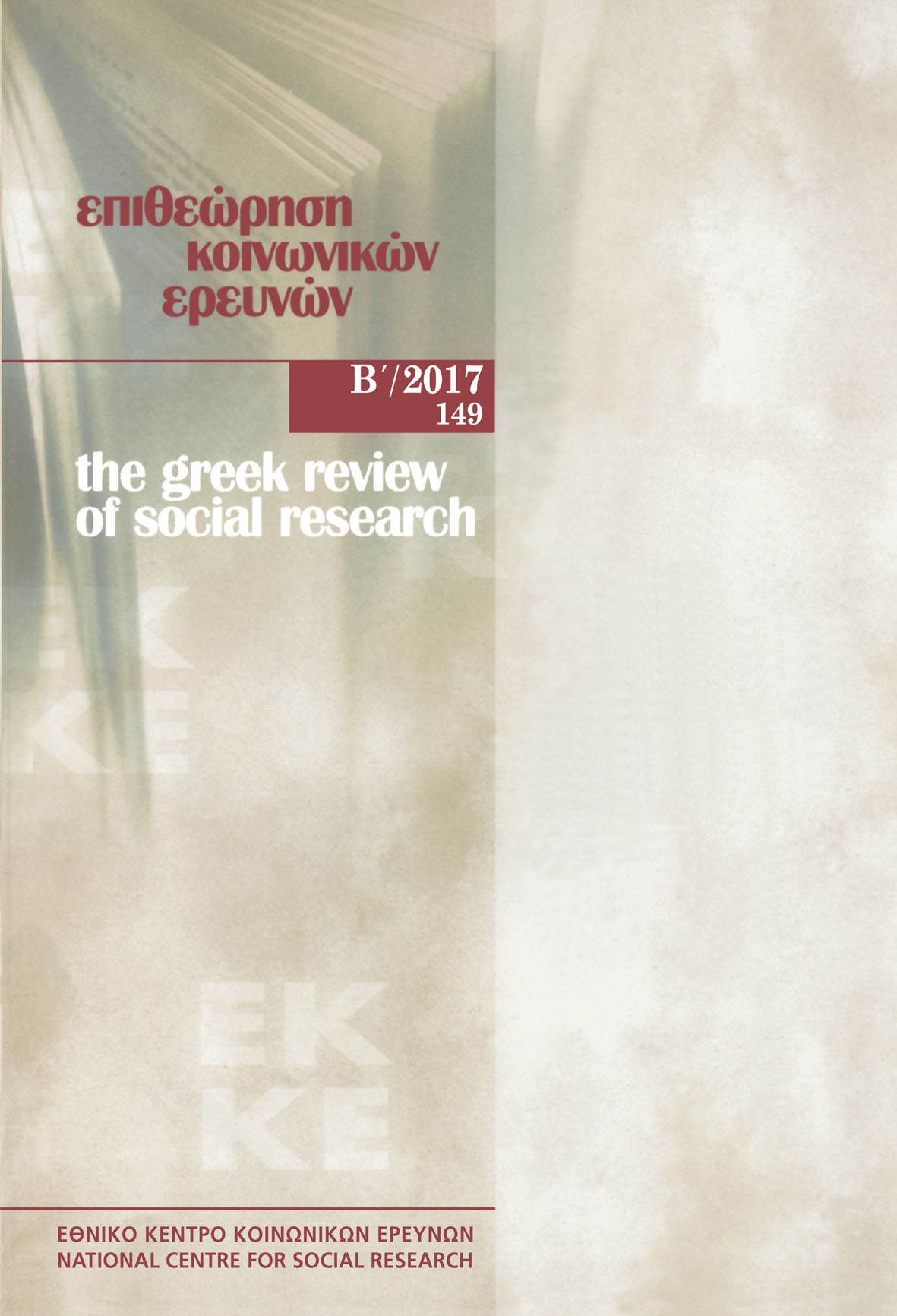Δημιουργικότητα, εναλλακτικές δημοσιότητες και η κοσμοπολιτική των ‘πλιατσικολόγων’ στο Μπέηογλου (Ιστανμπούλ)

Περίληψη
Η έξοδος στο Γκεζί το 2013 μας προκαλεί να εξετάσουμε αναδρομικά τη σύνθεση και τη δυναμική των κύριων δραστών που έλαβαν μέρος στις διαμαρτυρίες του Γκεζί, αυτούς που o Ρ.Τ. Ερντογκάν στιγμάτισε αποκαλώντας τους ‘πλιατσικολόγους’. Η μελέτη βασίζεται σε επιτόπια έρευνα που πραγματοποιείται από το 2008 στην περιοχή του Μπέηογλου, ανάμεσα σε φεμινίστριες, καλλιτέχνες, αρχιτέκτονες, συγγραφείς και ακαδημαϊκούς που ζουν ή/και δραστηριοποιούνται σε αυτήν την μοντέρνα καρδιά της σύγχρονης παγκόσμιας πόλης Ιστανμπούλ. Η συγκεκριμένη επιτόπια εθνογραφική έρευνα μας επιτρέπει να εξετάσουμε τις διευρυμένες πρακτικές, αισθητική και εμπρόθετη δράση που ανιχνεύονται μέσα σε εναλλακτικές δημοσιότητες. Οι εθνογραφικές συναντήσεις με τις τοπικές κριτικές φωνές που παράγουν αναστοχαστικά ‘κείμενα’ έδωσαν το στίγμα αυτής της μελέτης που εστιάζει στην σημασία της πολιτισμικής στροφής στα κινήματα κοινωνικής διαμαρτυρίας, δηλαδή τη στροφή στον ακτιβισμό των ταυτοτήτων, στην καλλιτεχνική δημιουργία και στη διάδραση με τις εναλλακτικές δημοσιότητες. Οι συγκεκριμένες μορφές κοινωνικής διαμαρτυρίας αποτελούν αντιδράσεις απέναντι στην αυταρχική διακυβέρνηση, στη νέο ισλαμιστική ηθική, τις φαντασιώσεις και τις κυβερνητικές τεχνολογίες αστυνόμευσης που επιβάλλονται σε σύμπραξη με τα νεοφιλελεύθερα προγράμματα εξευγενισμού και μετατροπής της Ιστανμπούλ σε δημιουργική πόλη, από το τέλος του 20ού αι. Το Μουσείο της Αθωότητας, ως πρότζεκτ του δημιουργού Ορχάν Παμούκ αποτελεί μια βασική μελέτη περίπτωσης στην οποία εστιάζει το παρόν άρθρο, επειδή συμπυκνώνει ειρωνικά και μετωνυμικά τις εναλλακτικές δημοσιότητες που μετασχηματίζονται σε σημαίνουσα κοσμοπολιτική των πλιατσικολόγων.
Λεπτομέρειες άρθρου
- Πώς να δημιουργήσετε Αναφορές
-
Tsibiridou, F. (2018). Δημιουργικότητα, εναλλακτικές δημοσιότητες και η κοσμοπολιτική των ‘πλιατσικολόγων’ στο Μπέηογλου (Ιστανμπούλ). Επιθεώρηση Κοινωνικών Ερευνών, 149, 79–101. https://doi.org/10.12681/grsr.15815
- Ενότητα
- Άρθρα

Αυτή η εργασία είναι αδειοδοτημένη υπό το CC Αναφορά Δημιουργού – Μη Εμπορική Χρήση 4.0.
Οι συγγραφείς των άρθρων που δημοσιεύονται στην Επιθεώρηση Κοινωνικών Ερευνών διατηρούν τα δικαιώματα πνευματικής ιδιοκτησίας επί των άρθρων τους, δίνοντας στο περιοδικό το δικαίωμα της πρώτης δημοσίευσης. Άρθρα που δημοσιεύονται στην Επιθεώρηση Κοινωνικών Ερευνών διατίθενται με άδεια Creative Commons 4.0 και σύμφωνα με την άδεια μπορούν να χρησιμοποιούνται ελεύθερα, με αναφορά στο/στη συγγραφέα και στην πρώτη δημοσίευση για μη κερδοσκοπικούς σκοπούς.
Το Εθνικό Κέντρο Κοινωνικών Ερευνών διατηρεί το δικαίωμα να δημοσιεύει, να αναπαραγάγει, να παρουσιάζει στο κοινό, να διανέμει και χρησιμοποιεί άρθρα που δημοσιεύονται στην Επιθεώρηση Κοινωνικών Ερευνών σε οποιοδήποτε μέσο και μορφή είτε μεμονωμένα είτε ως μέρη συλλογικών έργων, για όλο τον χρόνο διάρκειας προστασίας της πνευματικής ιδιοκτησίας και για όλες τις χώρες του κόσμου. Αυτό περιλαμβάνει ενδεικτικά και όχι αποκλειστικά το δικαίωμα δημοσίευσης των άρθρων σε τεύχη της Επιθεώρησης Κοινωνικών Ερευνών, αναπαραγωγής και διανομής μεμονωμένων αντιγράφων των άρθρων, αναπαραγωγής ολόκληρων των άρθρων σε άλλη έκδοση του Εθνικού Κέντρου Κοινωνικών Ερευνών, καθώς και αναπαραγωγής και διανομής των άρθρων ή περίληψης αυτών με χρήση πληροφορικού συστήματος αποθετηρίου.


